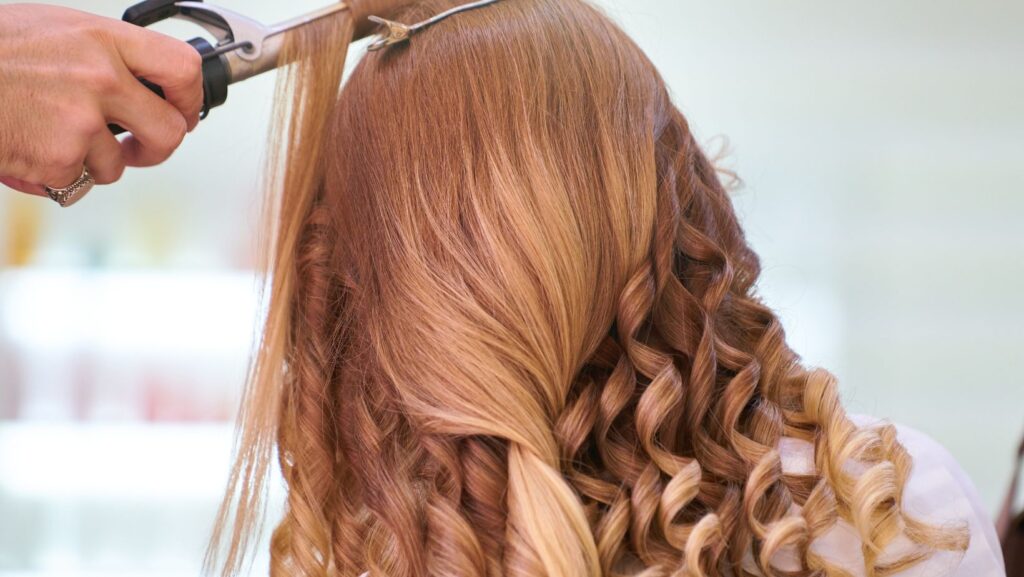Our hair is more than just a personal style statement — it’s a reflection of internal health and daily routine. Whether you have fine strands, thick curls, or straight hair that tends to dry out, keeping your hair healthy isn’t about expensive hair products — it’s about habits that protect each strand from root to tip.
According to Dr. Anil Sharma, a Toronto-based hair specialist known for his advanced hair restoration services, “Most cases of progressive hair loss are preventable with early awareness and consistent care. The goal is to protect the hair you have before it requires surgical treatment options.”
Below, Dr. Sharma and other experts share practical hair care tips to maintain strong, shiny strands and a healthier scalp for years to come.
1. Understand Your Hair Type and What It Needs
Every person’s hair is unique. Determining your specific hair type — straight, wavy, curly, or coily — helps you choose the right shampoo and conditioner for its natural structure and moisture level.
- Straight hair often looks sleek but gets greasy quickly because oil travels easily from roots to ends. Use a light, sulphate-free shampoo that cleanses without stripping essential moisture.
- Fine hair benefits from volumizing products and gentle handling to avoid breakage.
- Thick or coarse hair usually requires hydrating formulas to reduce dryness and enhance natural shine.
A simple change in routine — like switching to lukewarm water for your shower — can help preserve scalp oils that keep your hair healthy. Always finish with a cool rinse to seal the cuticle and boost shine.
2. Wash Smart, Not Hard
Over-washing is a common cause of dry hair and scalp irritation. The right frequency depends on your hair type and lifestyle:
- Oily or straight hair: Every other day with a gentle shampoo.
- Dry or curly hair: Two to three times a week to retain natural oil balance.
Use lukewarm water to open the cuticle and release product build-up, then apply a light conditioner from mid-lengths to ends. Avoid scrubbing the scalp harshly; instead, massage it with your fingertips to stimulate blood circulation and promote new growth.
Expert Tip from Dr. Anil Sharma: “If you wash too often or use harsh shampoo, you can weaken the roots and accelerate thinning. A balanced wash schedule keeps the scalp clean without robbing it of protective oils.”
3. Condition for Strength and Moisture
Conditioner isn’t optional — it’s your hair’s daily armour. Choose a formula suited to your hair texture and the level of dryness you experience. After each wash, gently rinse out shampoo and apply conditioner from mid-shaft to ends to help detangle and prevent breakage.
- For fine hair, use a lightweight conditioner that won’t weigh down the strands.
- For thick or coarse hair, look for creamy formulas with natural oil or shea butter to restore moisture.
Once a week, apply a deep-conditioning mask or a few drops of argan oil to boost hydration and protect the cuticle from environmental heat damage.
4. Handle Wet Hair With Care
Wet hair is especially vulnerable to breakage. After you shower, resist the urge to rub it vigorously with a towel. Instead, wrap it gently in a microfiber cloth or a soft T-shirt to absorb excess moisture without causing friction.
Use a wide-tooth comb to detangle from the ends upward, working slowly to avoid snapping fragile strands. Never comb or brush your hair aggressively when it’s wet; wait until it’s about 80 percent dry.
5. Protect From Heat and Styling Damage
Frequent blow drying, flat-ironing, and curling expose hair to intense heat, which can strip moisture and weaken the shaft. If you love to style your hair, apply a heat-protectant spray before using a blow dryer or iron.
Keep tools on a medium setting, and let your hair cool before re-styling. Regular trims, performed every 8–10 weeks, also help reduce split ends and preserve your hair’s natural shine.
For those who prefer straight styles, air-drying partially before straightening can cut heat exposure by half. Whenever possible, embrace your natural texture — the less you heat-style, the healthier your hair will be.
6. Feed Your Hair From the Inside Out
Great hair health begins long before you step into the shower. A balanced diet rich in protein, healthy fats, and essential vitamins fuels the follicles responsible for growth. Dr. Anil Sharma explains, “Your hair is made of keratin, a protein. Without enough protein and micronutrients, the body prioritizes vital organs over hair production. That’s when thinning and excessive hair loss appear.”
Include:
- Protein: fish, eggs, lentils, or nuts.
- Iron and zinc: support strong roots and prevent breakage.
- Omega-3s: from walnuts or salmon for added moisture and natural shine.
- Biotin and vitamin D: promote healthier growth cycles.
Staying hydrated also matters. Dehydration leads to dryness and dullness, while a well-hydrated scalp supports active follicles and healthier strands.
7. Choose the Right Hair Products for Your Hair Type
Your bathroom shelf shouldn’t be a random collection of bottles — every product should match your hair type and condition.
- Fine or straight hair: Lightweight shampoo and conditioner keep volume without buildup.
- Thick or coarse hair: Rich, creamy hair products with natural oil content help retain moisture.
- Colour-treated hair: Use sulphate-free formulas that protect hair colour and preserve the cuticle’s shine.
If your roots feel greasy between washes, use dry shampoo sparingly to refresh without over-drying. For those battling dry hair or frizz, opt for leave-in conditioner or light styling products that lock in hydration.
Dr. Anil Sharma’s tip: “Less is often more. Layering multiple hair products can weigh the strands down or irritate the scalp. Stick to a consistent, evidence-based routine.”
8. Scalp Care: The Foundation of Healthy Hair
Think of your scalp as the garden bed for every strand. Proper hair care starts here.
Massage your scalp gently for a few minutes each day to improve blood circulation and nourish the roots. This simple act helps keep hair healthy and can even support hair growth by ensuring adequate oxygen and nutrient flow.
A clean scalp is vital, but over-cleansing can backfire. Rotate between a clarifying shampoo once a week to cleanse product residue and a mild hydrating formula for regular use.
Avoid scratching or using nails during washing — use fingertips in small circular motions. This keeps the surface intact and prevents irritation or small wounds that could compromise healthy hair follicles.
9. Everyday Habits That Make or Break Your Hair
Seemingly harmless routines can damage hair if done incorrectly. Here’s how to refine them:
- Brush gently: Use a paddle brush with rounded tips for daily detangling. Avoid over-brushing, which can lead to breakage.
- Comb smartly: Always detangle from ends upward using a wide-tooth comb — especially after the shower when strands are softer.
- Towel wisely: Don’t rub; wrap hair to absorb water and minimize friction.
- Blow drying: Keep the nozzle moving and maintain a safe distance from your head to avoid concentrated heat.
- Protect from UV and pollution: Cover hair with a hat or scarf on sunny or windy days.
These simple tips reduce everyday wear and tear, ensuring long-term, healthier, and shinier results.
10. Managing Hair Loss and When to Seek Help
Even with meticulous care, some people notice hair loss or thinning due to genetics, hormonal shifts, or stress. Early intervention is key.
If you see sudden shedding or widening parts, book an appointment with a certified specialist like Dr. Anil Sharma. He performs diagnostic evaluations to determine whether the cause is temporary (such as nutrient deficiency or medication side effects) or progressive.
Depending on the diagnosis, treatment options may include topical medication, nutritional support, or advanced non-invasive therapies. In more resistant cases, minimally invasive surgery such as follicular unit transplantation may be discussed — but only when preventive measures fail.
Dr. Anil Sharma advises: “Good hair care delays the need for intervention. Surgery is a tool, not the starting point.”
11. Lifestyle, Stress, and Long-Term Hair Health
Stress doesn’t just affect your mood; it directly impacts the hair follicles. Chronic tension constricts blood circulation, reducing nutrient delivery to the roots. Incorporate relaxation practices — yoga, walks, or even coffee breaks away from screens — to keep your scalp environment balanced.

Avoid crash diets or restrictive eating; your hair reflects what you feed your body. Balanced food choices and proper rest are as crucial as any shampoo or conditioner you buy.
12. Professional Support and Modern Services
Today’s hair care industry offers a wide range of services, from personalized scalp analysis to laser light therapy for healthier growth. Clinics under Health Canada guidelines, such as those led by Dr. Anil Sharma, provide clinically tested treatment options rather than cosmetic quick fixes.
Whether you’re managing seasonal hair loss or trying to enhance your natural shine, consulting an expert ensures safe and measurable results.
Final Thoughts: Protect What You Have
Maintaining healthy hair doesn’t require luxury — it needs proper hair care, consistency, and awareness.
Start with gentle washing habits, targeted nutrition, and mindful styling. Avoid overuse of heat, harsh chemicals, and tight styles that strain the follicles. Invest in quality hair products suited to your hair type and trust expert advice when changes appear.
With realistic care and professional guidance from Dr. Anil Sharma, you can preserve your natural hair texture, reduce breakage, and enjoy healthier, shinier strands that reflect overall wellness.
Remember: your hair’s vitality mirrors your body’s balance. Treat it with respect, feed it well, and it will reward you with strength and vibrant life for years to come.
Disclaimer:
This article is intended for informational purposes only. It does not replace personalized medical advice or diagnosis. Always consult a qualified healthcare provider or licensed trichologist before starting new treatments or using medicated hair products.
